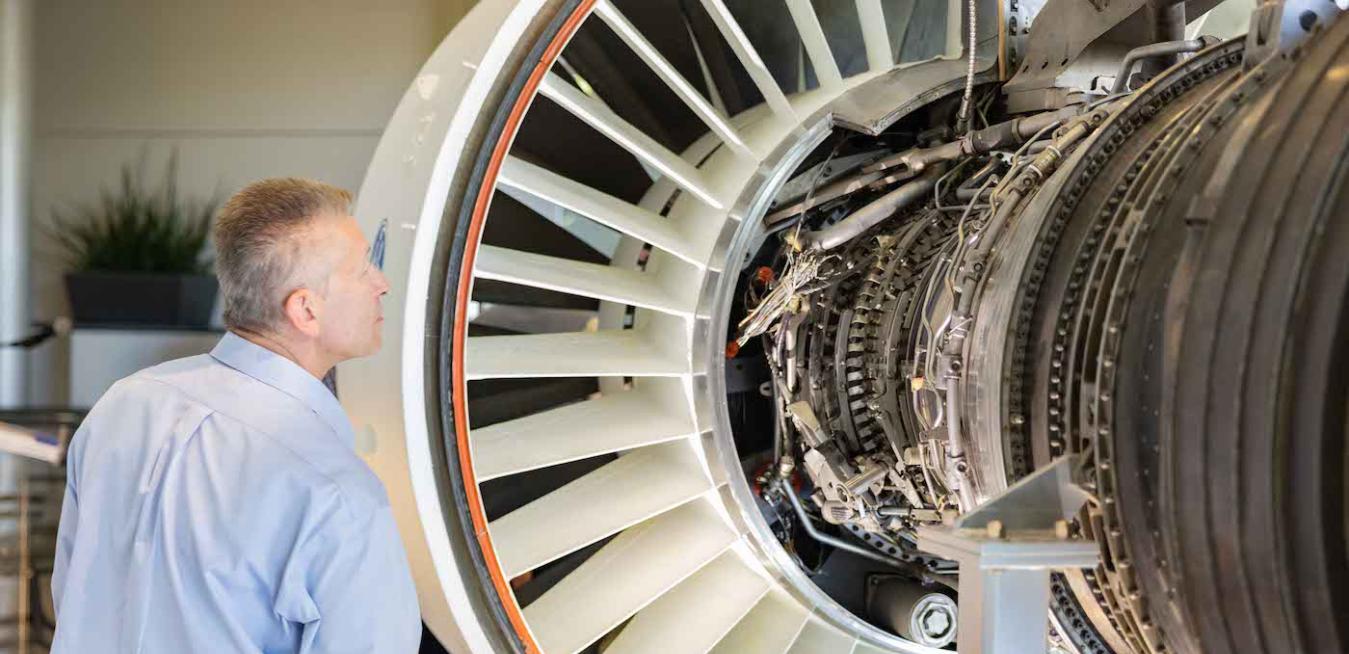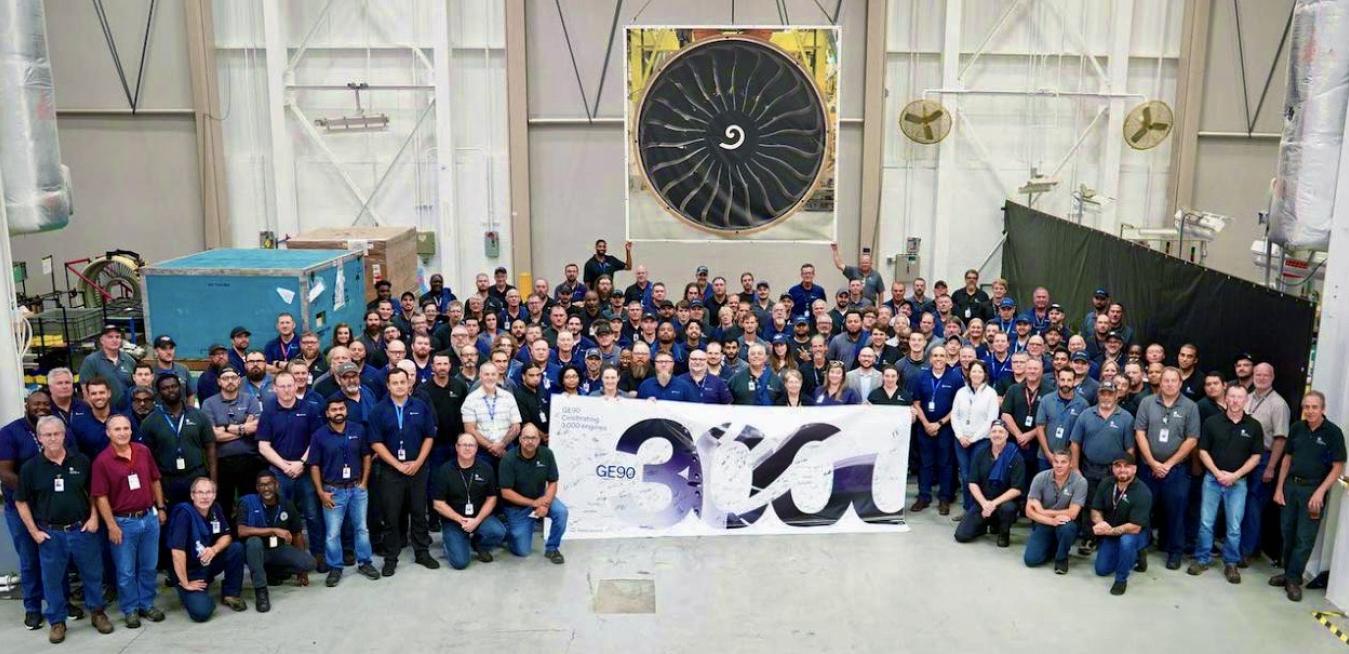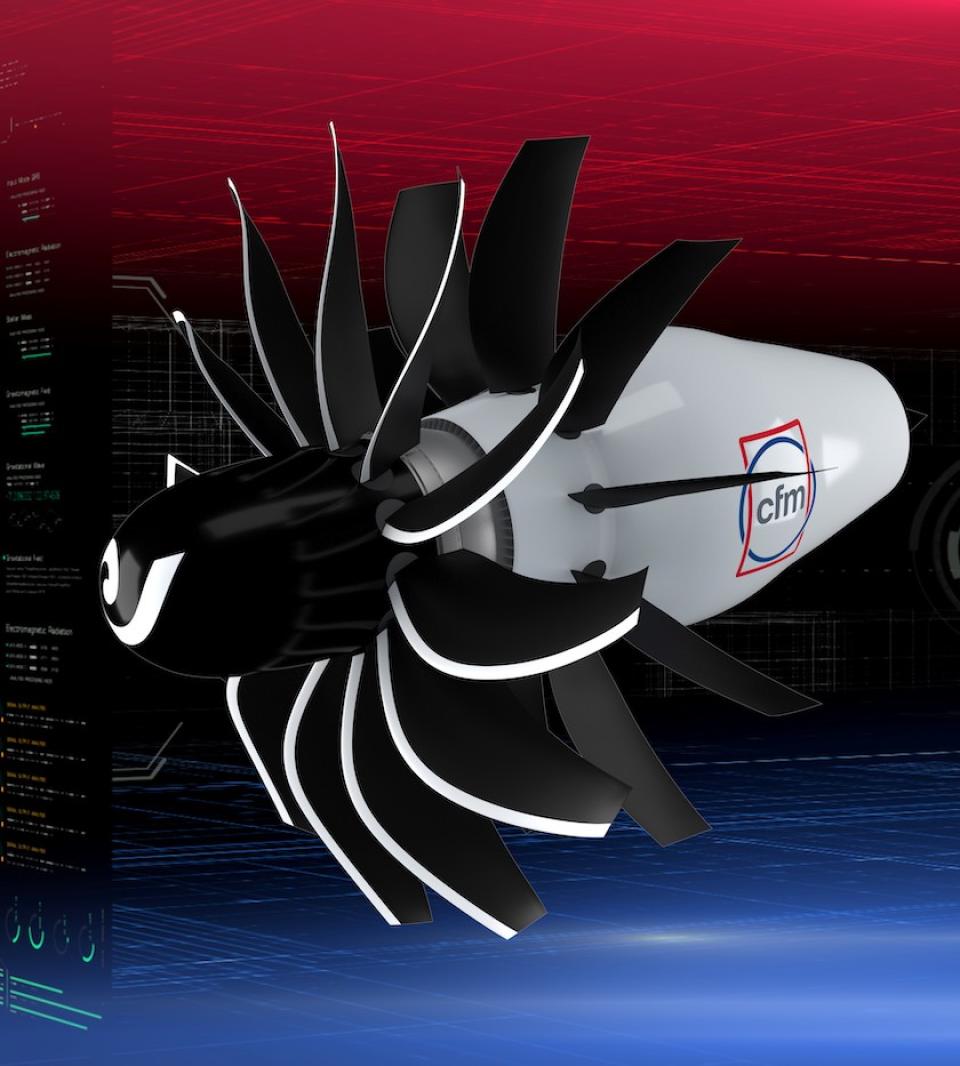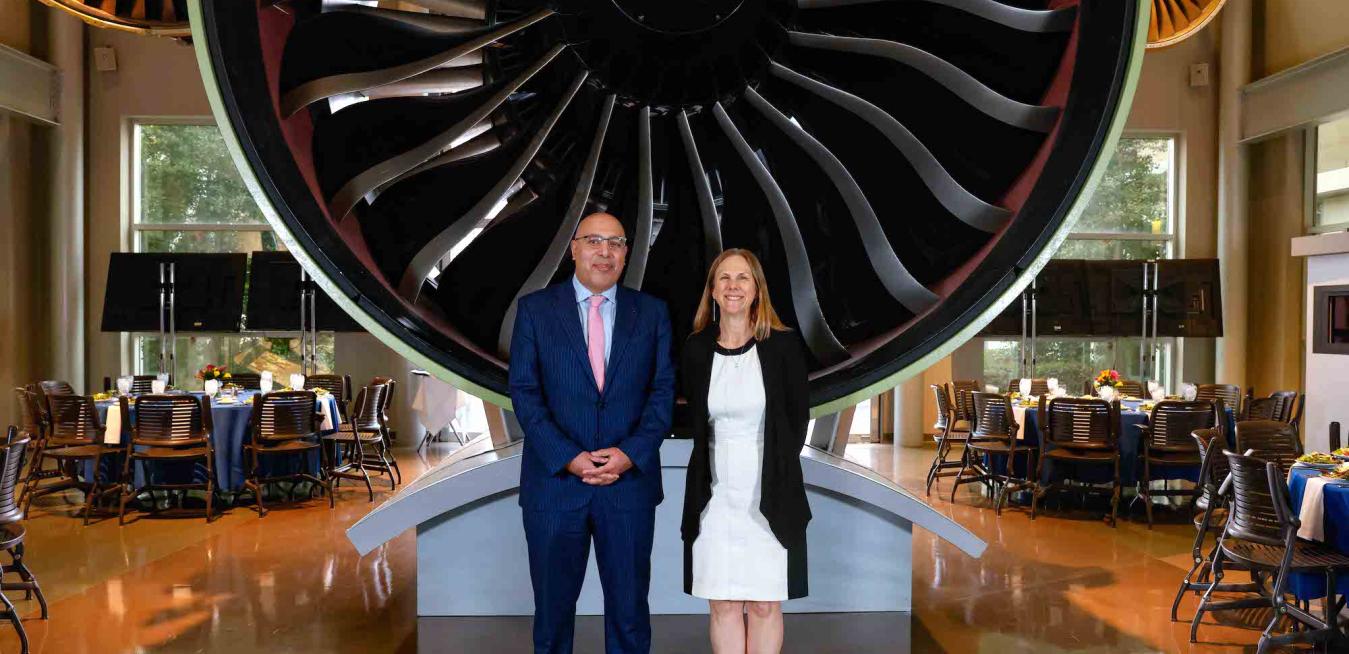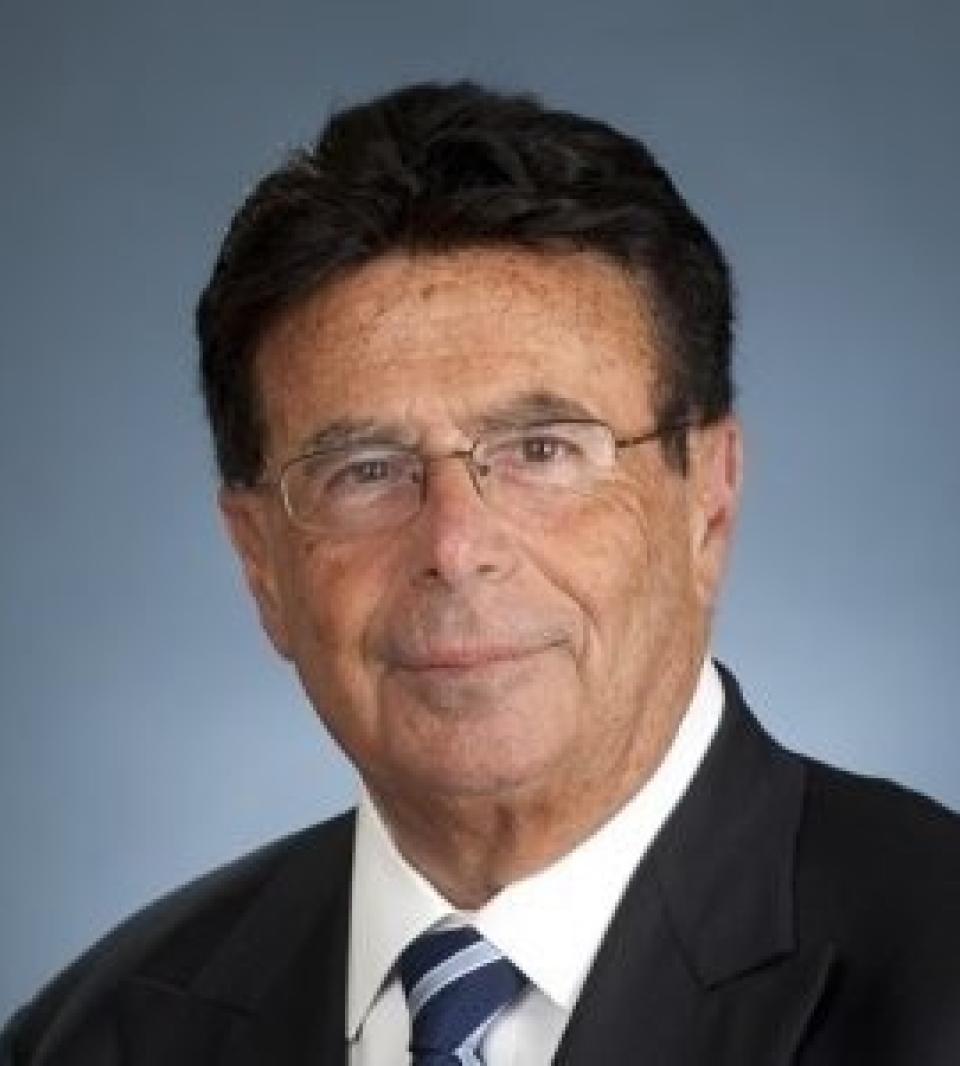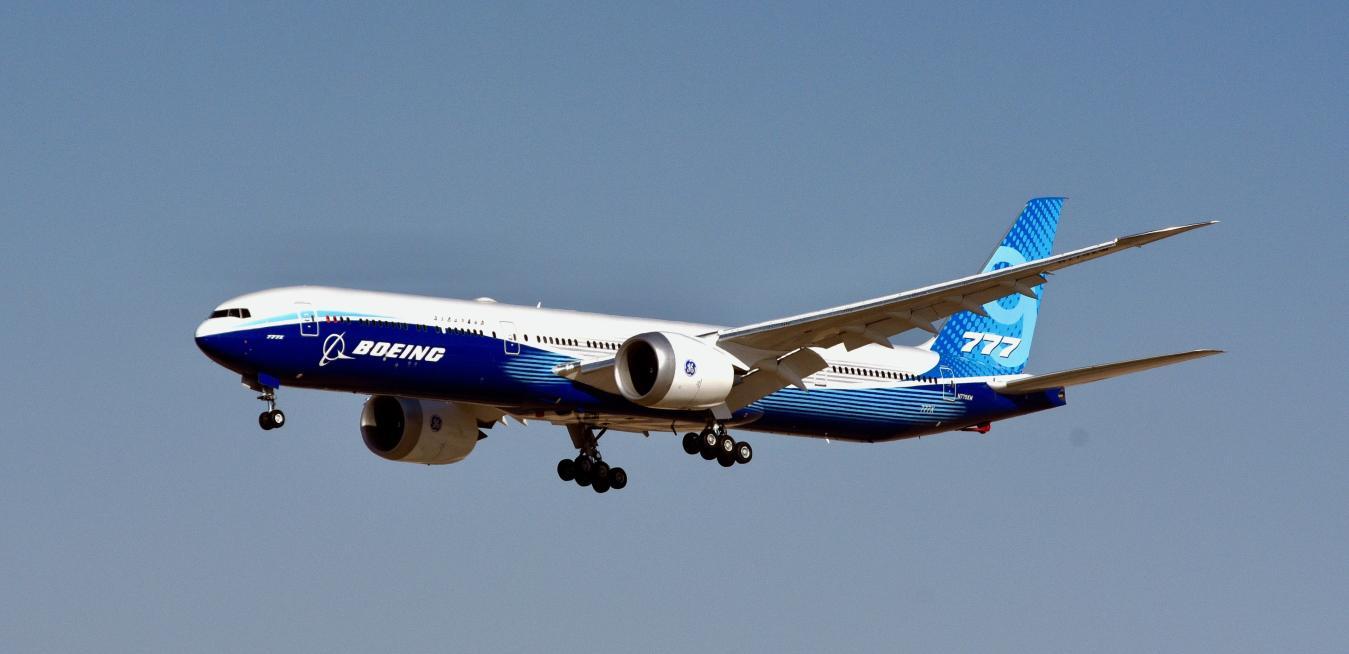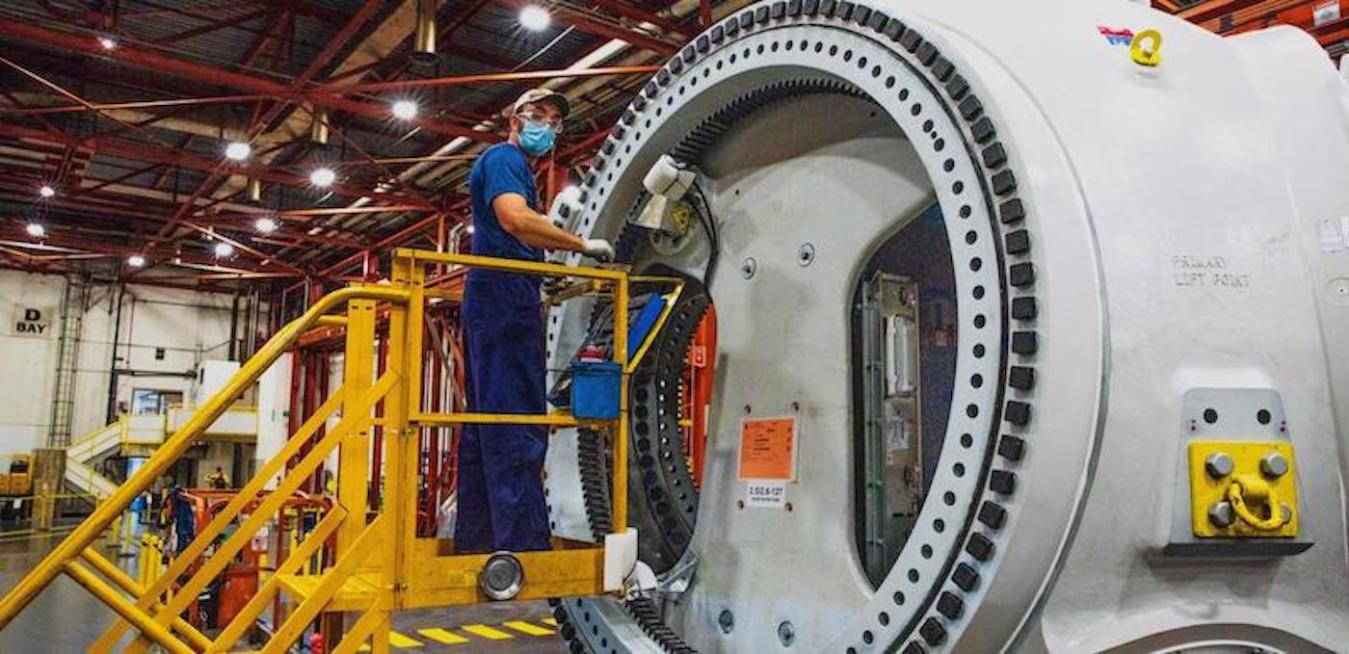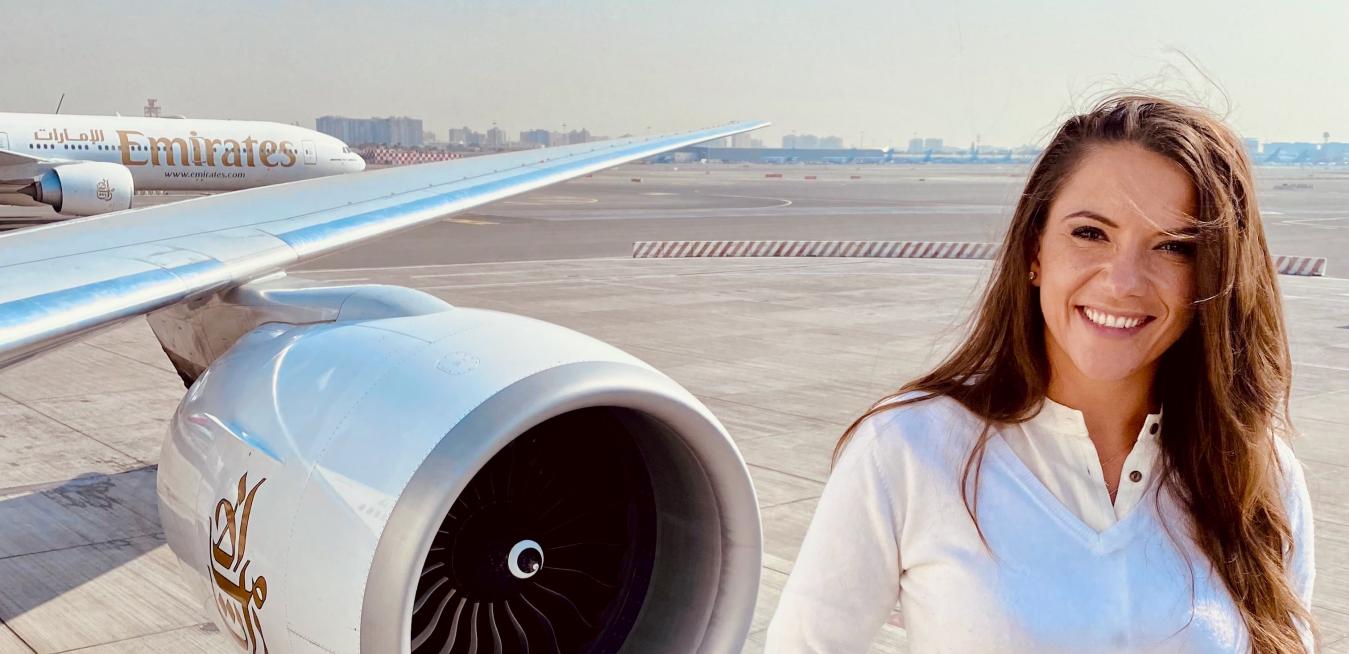The dawn of the jet age gave birth to the concept of the global village. Once jet engines made the jump from military fighters to civilian planes in the 1950s, commercial passenger service could carry people farther and faster than ever before. Fares dropped, ticket sales quadrupled, and by 1972 almost half of all Americans had traveled by air.
In the annals of engine production, the GE90 holds a special attraction for both the aviation world and the people at GE Aerospace who’ve worked on the engine program. Among commercial engines, the number of firsts it’s chalked up over the years is hard to beat: First to enter service with carbon-fiber composite fan blades. First certified at over 100,000 pounds of thrust. First engine certified for ETOPS (Extended-range Twin-engine Operational Performance Standards). First certified with an additive part. First program to employ analytics-based maintenance.
In 1941, the United States government asked GE to develop the first American jet engine. Allied defense, industrial collaboration, technological advancement, and economic growth were at stake. GE delivered the very next year.
Now, more than 80 years later, GE Aerospace finds itself at the cusp of another era-defining moment. With climate change impacting communities and economies around the world, the aerospace industry is in the midst of what feels to some like a seismic shift.
As a 10-year-old, Pam Boehm sometimes sat in on her older sister’s engineering classes at the University of Notre Dame. Not the usual activity for a kid, but the experience introduced her to a discipline that would shape her life. “It’s not that I really had any idea what was happening in the classes, but the math was always exciting,” she says. After her father died unexpectedly, her grandfather stepped in as another big influence. Much of the rest of her childhood was spent following her “Mr.
Meyer “Mike” Benzakein used to attract attention in GE Aerospace meetings for a funny habit: At first glance, he appeared to be sleeping. Young engineers would wonder about his focus — until he spoke up with an incisive question.
“He was actually sharply paying attention,” recalls Mohamed Ali, vice president of engineering for GE Aerospace. “He would say only a few words, but his point was very clear.”
This Thursday, GE will hold its annual Investor Conference at GE Aerospace’s Customer Technical Education Center and nearby manufacturing facilities in Cincinnati and will feature keynote presentations from GE Chairman and CEO and GE Aerospace CEO Larry Culp, GE Vernova CEO Scott Strazik, and leaders from both businesses.
It’s been four years since aviation fans, industry executives, aerospace engineers and investors last descended on the local airport in Farnborough, a quiet town about an hour southwest of London. Normally, the Farnborough International Airshow takes place every two years, alternating with the Paris Air Show. Together, they are the focal point for the aerospace industry. The pandemic disrupted this rhythm, but starting Monday the Farnborough show is back on track.
In the 1970s, a team of researchers from the Massachusetts Institute of Technology traveled to Japan to figure out why that country’s automakers were delivering cars faster than their competitors in Detroit. Their search led them to Toyota and its Toyota Production System — a set of management principles focused on boosting safety, quality and efficiency, reducing waste and creating more value with fewer resources.
Categories
As a young girl, Roxana Leonte remembers feeling awestruck by the white lines of the contrails that airplanes left in the sky as they soared high above her home in Romania. She marveled at everything from the physics that allowed airplanes to take flight to what it would feel like to be a passenger or even the pilot on a jumbo jet.
